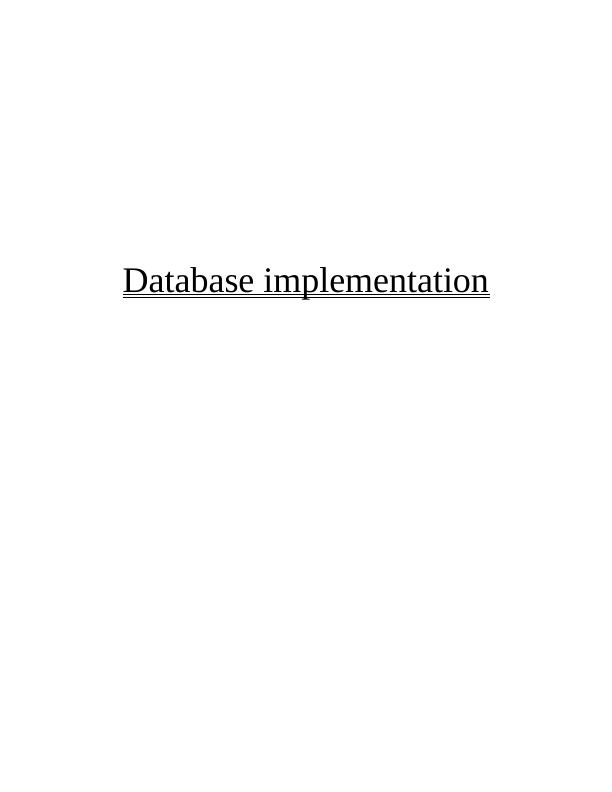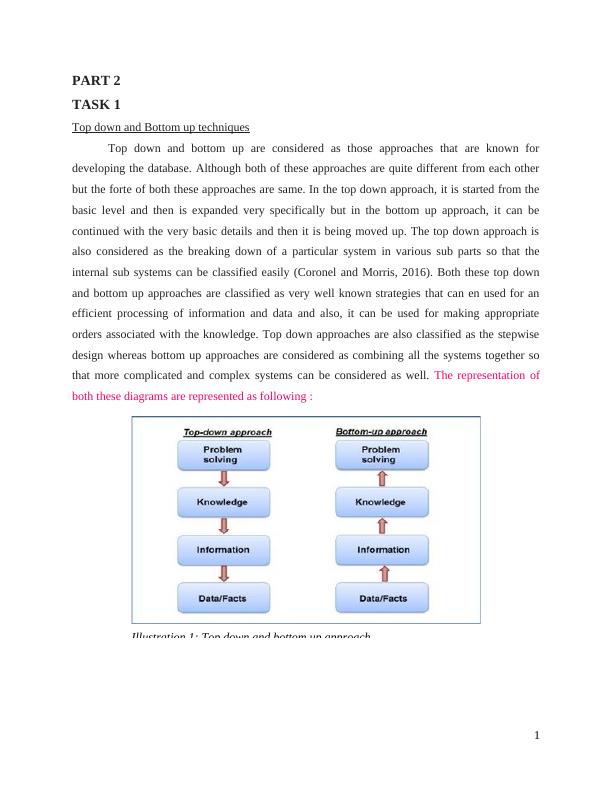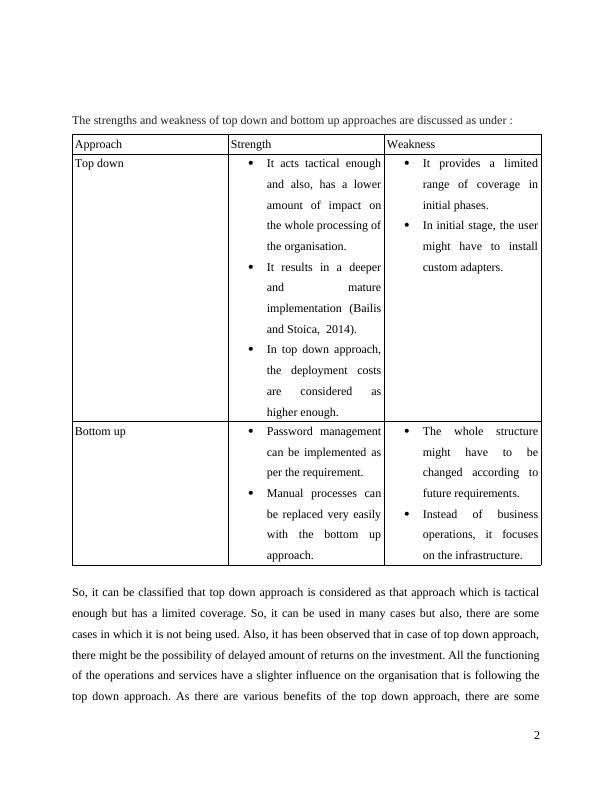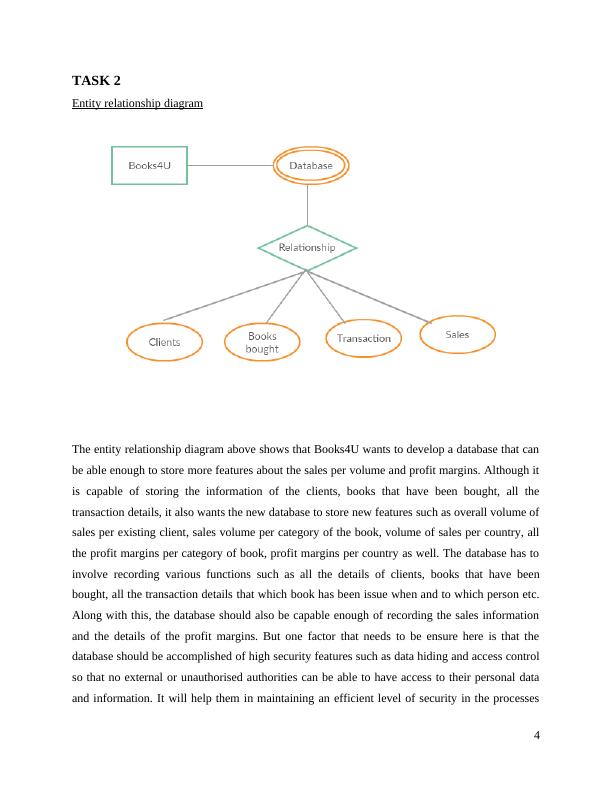Table of Contents Part 21 Table Sales Volume 11 Table Books4U 9 Table Client 9 Table Books10 Table Books10 Table Profit MarginP 12 TASK 515 Enriching and Extending Semantic Content of Table Database I
Submit a Database Implementation assessment covering LO1 and worth 25% of the module.
23 Pages4682 Words365 Views
Added on 2020-09-03
About This Document
Database implementation TABLE OF CONTENTS PART 21 TASK 11 Top down and Bottom up techniques 1 TASK 23 Entity relationship diagram 3 Conversion of ERD in a set of corresponding relations 5 Relational database design8 TASK 39 Tables using SQL query language for Books4U 9 Table Client 9 Table Books 10 Table Transaction11 Table SalesVolume11 Table ProfitMarginP 12 TASK 413 SQL queries and screenshots 13 TASK 515 Enriching and extending semantic content of the database 15 How can they
Table of Contents Part 21 Table Sales Volume 11 Table Books4U 9 Table Client 9 Table Books10 Table Books10 Table Profit MarginP 12 TASK 515 Enriching and Extending Semantic Content of Table Database I
Submit a Database Implementation assessment covering LO1 and worth 25% of the module.
Added on 2020-09-03
ShareRelated Documents
End of preview
Want to access all the pages? Upload your documents or become a member.
Logical and Physical Database Design and DBMS Functions
|10
|1108
|66
ER Modelling
|42
|8092
|1
(PDF) Database Management: Concepts and Design
|19
|1237
|144
ER Modelling
|9
|1312
|51
Database and Analytics (Database and Analytics) for the Auto Sale's
|33
|5085
|217
Data Modelling and Sql Language - Assignment
|18
|2256
|44






